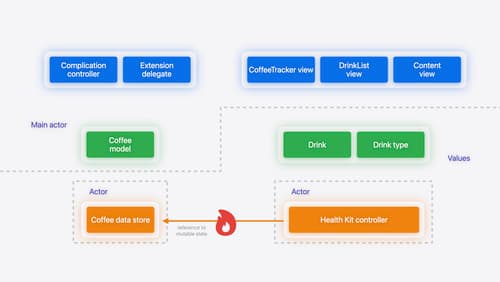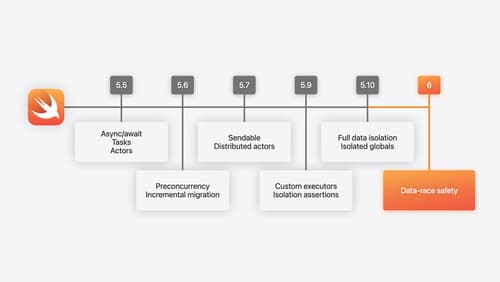How do I migrate a large codebase to swift 6 ?
Asked on 2024-08-03
1 search
To migrate a large codebase to Swift 6, you can follow a structured, step-by-step process. Here are the key steps:
-
Enable Complete Concurrency Checking: This is a per-module setting that leaves your project in Swift 5 mode but enables warnings for all the code that would fail with Swift 6's enforced data isolation. This helps you identify and resolve potential issues early.
-
Resolve Warnings: Go through the warnings generated by the concurrency checking and resolve them. This step ensures that your code is ready for the stricter data isolation rules in Swift 6.
-
Enable Swift 6 Mode: Once all warnings are resolved for a target, enable Swift 6 mode for that target. This locks in all your changes and prevents future regressions to an unsafe state.
-
Repeat for Each Target: Move on to the next target and repeat the process. This incremental approach allows you to migrate your codebase module by module, making the process more manageable.
-
Whole App Refactoring: After all targets are migrated, you might want to do some whole app refactoring to optimize and clean up your code further.
For a detailed walkthrough, you can refer to the session Migrate your app to Swift 6 from WWDC 2024.
Additionally, the session Platforms State of the Union provides insights into the new Swift 6 language mode and its benefits, such as compile-time data race safety.
Relevant Sessions
These sessions will provide you with comprehensive guidance and best practices for migrating your codebase to Swift 6.

Migrate your app to Swift 6
Experience Swift 6 migration in action as we update an existing sample app. Learn how to migrate incrementally, module by module, and how the compiler helps you identify code that’s at risk of data races. Discover different techniques for ensuring clear isolation boundaries and eliminating concurrent access to shared mutable state.

Platforms State of the Union
Discover the newest advancements on Apple platforms.

What’s new in Swift
Join us for an update on Swift. We’ll briefly go through a history of Swift over the past decade, and show you how the community has grown through workgroups, expanded the package ecosystem, and increased platform support. We’ll introduce you to a new language mode that achieves data-race safety by default, and a language subset that lets you run Swift on highly constrained systems. We’ll also explore some language updates including noncopyable types, typed throws, and improved C++ interoperability.
